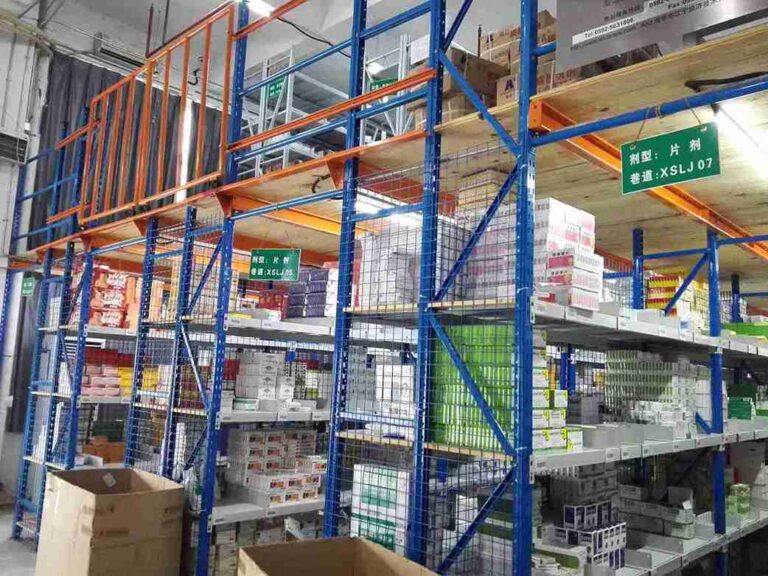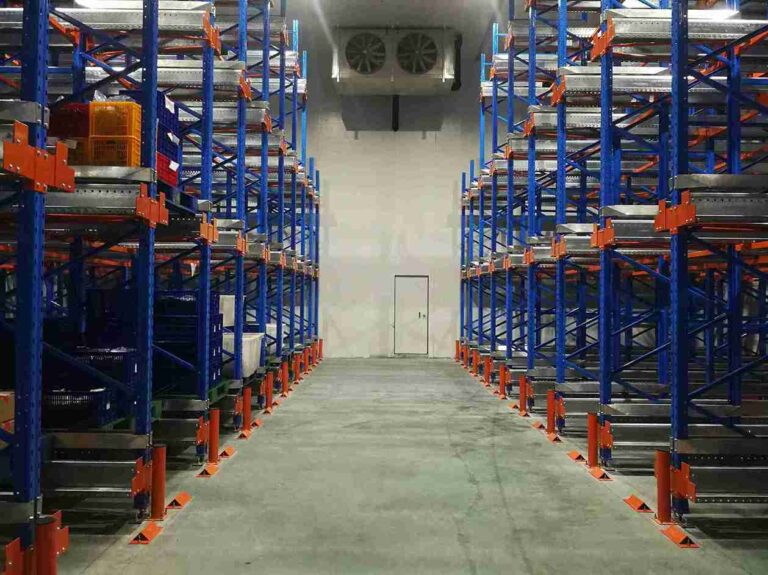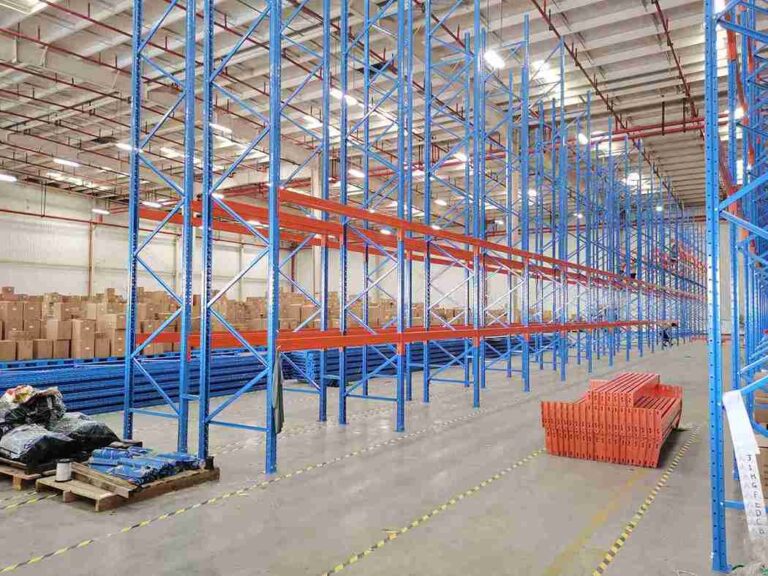📐 "First 50 Enterprise Queries Get Custom 3D Warehouse Design" Plan

The evolution of the modern warehouse is a story of convergence, where static storage transforms into a dynamic, intelligent partner in the supply chain. This transformation is powered by the deep, strategic integration of two core technologies: the foundational strength of heavy-duty metal shelf racks and the agile intelligence of Autonomous Guided Vehicles (AGVs). This comprehensive analysis moves beyond superficial overviews to provide a detailed blueprint for creating a cohesive, self-optimizing storage ecosystem.
It delves into the critical engineering specifications required for heavy-duty metal shelf racks in robotic environments, explores the symbiotic relationship between various AGV types and racking configurations, demystifies the role of software as the central nervous system, and outlines a proven, phased implementation strategy designed to maximize return on investment and build a future-proof operational infrastructure.

The Unseen Intelligence of Modern Heavy-Duty Metal Shelf Racks
In a manual warehouse, heavy-duty metal shelf racks are passive structures, expected to bear weight and endure incidental contact from forklifts. In a fully automated ecosystem, their role is fundamentally elevated. These are no longer just shelves; they are a high-precision, active component of the automation system itself. The reliability of the entire operation hinges on the absolute predictability and structural integrity of every heavy-duty metal shelf rack.
A human operator can compensate for a slightly warped beam or an uneven floor; an AGV, operating on digital commands and millimeter-level precision, cannot. The entire concept of a fully automated warehouse collapses if the heavy-duty metal shelf racks are not engineered to robotic standards. This demands a shift in perspective from viewing these structures as commodity storage to recognizing them as critical, high-accuracy infrastructure.
Precision Engineering: The Non-Negotiable Specifications for Robotic Racks
The manufacturing and installation tolerances for heavy-duty metal shelf racks destined for AGV integration are orders of magnitude tighter than for conventional applications. The following factors become paramount:
-
Dimensional Fidelity and System-Wide Consistency: Every component of a heavy-duty metal shelf rack—from the upright frames to the cross-beams and decking—must be manufactured and installed with near-perfect consistency. A deviation of even a few millimeters across a long aisle can cause an AGV’s navigation system, whether based on LiDAR, vision, or wire-guidance, to accumulate error. This can result in failed pallet engagements, rack collisions, or complete system halts. Suppliers specializing in automation-grade heavy-duty metal shelf racks implement rigorous quality control processes to ensure that the digital twin of the warehouse in the management software is a perfect reflection of the physical reality.
-
Dynamic Load Capacity and Structural Fatigue Resistance: The interaction between an AGV and a heavy-duty metal shelf rack is characterized by repetitive, localized forces. The constant, precise engagement and withdrawal of a forklift AGV’s tines apply specific cyclical stresses to the rack’s beams and uprights. Therefore, these heavy-duty metal shelf racks must be designed not only for high static load capacity but, more critically, for dynamic load fatigue over millions of cycles. The design must account for potential uneven loading scenarios, as an AGV might place a pallet with a slight skew that a human would immediately correct. The resilience of the heavy-duty metal shelf rack in these conditions is what ensures long-term operational integrity.
-
Critical Clearance and Interface Specifications: This is where the synergy between rack and robot is physically defined. Meticulous calculation is required for:
-
Aisle Width Integrity: The space-saving advantage of AGVs lies in their ability to operate in very narrow aisles (VNA). This requires the heavy-duty metal shelf racks to be perfectly vertical and plumb after installation and to remain so despite seismic activity or minor impacts. Any leaning compromises the safe operating aisle width.
-
Operational Clearances: Ensuring there is just enough space for the AGV’s fork mechanism or lift mast to operate without striking the heavy-duty metal shelf rack structure is a complex task. It involves a detailed analysis of the AGV’s kinematic profile, pallet dimensions (including overhang), and the exact beam and upright dimensions. This prevents costly damage to both the robot and the heavy-duty metal shelf racks.
-
A Symbiotic Partnership: Matching AGV Types to Heavy-Duty Metal Shelf Rack Configurations
The choice of AGV is not independent of the choice of heavy-duty metal shelf racks; it is a co-dependent decision. Different AGVs are engineered to interface with specific types of storage systems, creating optimized workflows for various applications.
Unit Load and Pallet-Handling AGVs: The Backbone of Pallet Movement
These robust AGVs are designed for the core task of moving unit loads and pallets, making them ideal partners for high-bay heavy-duty metal shelf racks.
-
Integration with Selective Pallet Racking: This is the most common and versatile configuration. Fork-type AGVs are programmed to navigate narrow aisles between towering heavy-duty metal shelf racks, retrieving and storing pallets from precisely assigned locations. The heavy-duty metal shelf racks in this setup often feature reinforced upright protectors and high-visibility, impact-resistant lower sections to aid the AGV’s safety systems and prevent catastrophic damage.
-
Operating within High-Density Systems: For maximizing storage density in systems like push-back racking or drive-in racking, the AGV’s role becomes more complex. It must interact with the internal rail and cart system of the heavy-duty metal shelf rack. This requires exceptionally precise programming and communication between the AGV’s control system and the rack’s mechanical design. The heavy-duty metal shelf racks used in these applications must be engineered to withstand the unique lateral and pushing forces inherent in these systems, far beyond the requirements of standard selective heavy-duty metal shelf racks.
Compact AGVs and AMRs for Carton and Tote Handling
The e-commerce and piece-picking revolution relies on smaller, more nimble robots, which interface with a different class of heavy-duty metal shelf racks.
-
Collaborative Mobile Shelving Systems: In this “goods-to-person” model, Autonomous Mobile Robots (AMRs) approach a section of heavy-duty metal shelf racks, often configured as sturdy, boltless shelving, and transport the entire unit to a stationary pick station. This requires the heavy-duty metal shelf racks to be incredibly rigid and stable to prevent product shifting or oscillation during movement. The design of these heavy-duty metal shelf racks prioritizes a low center of gravity and a robust frame to ensure safe robot-assisted transport.
-
Interface with Bin and Drawer Systems: For small parts and components storage, AGVs can be tasked with retrieving individual bins or drawers from specialized heavy-duty metal shelf racks configured with high-density drawer systems. This requires a custom-designed mechanical interface between the AGV’s manipulator arm and the storage bin, a challenge that demands close collaboration between the heavy-duty metal shelf rack manufacturer and the robotics integrator.
The Central Nervous System: WMS and WES as the Orchestrating Force
The physical integration of heavy-duty metal shelf racks and AGVs is enabled by the digital integration facilitated by advanced software. The Warehouse Management System (WMS) and its more advanced counterpart, the Warehouse Execution System (WES), act as the central brain, orchestrating the entire symphony of movement and storage.
Hyper-Accurate, Real-Time Inventory Synchronization
In a fully automated warehouse, the WMS/WES possesses granular, real-time knowledge of every inventory item. It doesn’t just know a pallet is in “Aisle 7-B”; it knows it is precisely located on the fourth level of a specific heavy-duty metal shelf rack bay, on a beam whose location is confirmed by integrated barcodes or RFID tags.
This hyper-accuracy allows the system to dispatch an AGV with flawless instructions. The integrity of this data is paramount; a single pallet misplaced by a human operator on a heavy-duty metal shelf rack can create a cascading failure, halting the retrieval process. This underscores why the precision and consistency of the heavy-duty metal shelf rack layout are foundational to digital accuracy.
Advanced Traffic Management and Workflow Optimization
A fleet of AGVs navigating a dense network of heavy-duty metal shelf racks represents a complex logistical challenge. The WES dynamically manages this traffic, preventing deadlocks in narrow aisles, prioritizing orders based on real-time shipping deadlines, and ensuring the fleet is charged and utilized efficiently. It makes real-time decisions, such as rerouting an AGV around a congested zone or reassigning a task to a closer vehicle, all to maximize the throughput of the integrated system of heavy-duty metal shelf racks and robots.
A Phased Blueprint for Implementation: Mitigating Risk and Ensuring Success
Transitioning to a fully automated warehouse is a significant capital project that should not be approached as a “big bang” rollout. A phased, methodical strategy de-risks the investment and builds operational confidence.
Phase 1: Comprehensive Audit and Digital Twin Development
The journey begins with an exhaustive analysis of the existing facility and operations.
-
Infrastructure Audit: A critical assessment of the current heavy-duty metal shelf racks is conducted. Can they be retrofitted to meet robotic precision standards, or is a full replacement with automation-grade heavy-duty metal shelf racks necessary?
-
Facility Condition Survey: The performance of AGVs is highly sensitive to floor flatness. A professional survey identifies areas requiring remediation to ensure smooth and predictable AGV navigation between the heavy-duty metal shelf racks.
-
Digital Twin Creation: Using advanced laser scanning and modeling software, a perfect digital replica of the warehouse is created. This model, incorporating every heavy-duty metal shelf rack, becomes the foundational platform for all simulation, layout optimization, and virtual commissioning, identifying potential issues long before physical installation begins.
Phase 2: The Hybrid Pilot: Proving the Concept
Before enterprise-wide rollout, a hybrid operational model is strongly recommended. This involves installing the new, precision heavy-duty metal shelf racks in a designated zone and deploying a pilot fleet of AGVs to service it. This allows the operational team to:
-
Gain invaluable hands-on experience with the technology and its maintenance.
-
Validate the projected ROI and system performance metrics in a live, but contained, environment.
-
Identify and resolve any integration challenges between the AGVs, the WES, and the new heavy-duty metal shelf racks without impacting the entire operation.
Phase 3: Full-Scale Deployment and the Path to Continuous Optimization
With the pilot phase successfully validated, the system is scaled across the warehouse. This involves the complete installation of the automated heavy-duty metal shelf racks and the full AGV fleet. The project, however, does not end at “go-live.” The system enters a phase of continuous optimization. Data on AGV travel times, utilization rates of each heavy-duty metal shelf rack location, and pick-cycle times are collected and analyzed. This data feeds AI and machine learning algorithms within the WES, enabling it to dynamically reconfigure tasks and even suggest layout modifications to the heavy-duty metal shelf rack configuration for perpetual efficiency gains.
Quantifying the Investment: A Detailed ROI Analysis
Justifying the capital expenditure for integrating heavy-duty metal shelf racks with AGVs requires a holistic view of the financial benefits, which extend far beyond labor displacement.
-
Labor Reallocation and Upskilling: The most direct saving comes from automating repetitive, physically demanding transport tasks. This allows the existing workforce to be upskilled for higher-value roles in system supervision, exception handling, and data analysis, while also providing a strategic defense against labor market shortages.
-
Radical Space Optimization: The combination of AGVs and very-narrow-aisle (VNA) heavy-duty metal shelf racks can increase storage density by 40-60% compared to traditional wide-aisle forklift operations. This translates directly into the ability to store more goods in the same footprint or to reduce the overall facility size, yielding significant real estate savings.
-
Unmatched Operational Throughput and Accuracy: Automated systems operate consistently 24/7, unaffected by shifts, breaks, or fatigue. This leads to a dramatic increase in order fulfillment rates and near-perfect inventory accuracy, directly reducing shipping errors and enhancing customer satisfaction, which positively impacts revenue.
-
Enhanced Safety and Asset Protection: Removing manually operated forklifts from aisles drastically reduces workplace accidents and product damage caused by impacts with heavy-duty metal shelf racks. This leads to lower insurance premiums, reduced product loss, and less downtime for rack repair.
Future-Proofing the Automated Warehouse: Designing for Tomorrow’s Technology
The pace of technological change in intralogistics is rapid. The integrated system of heavy-duty metal shelf racks and AGVs installed today must be adaptable to the innovations of tomorrow.
-
Inherent Modularity and Scalability in Design: Leading providers design their heavy-duty metal shelf racks with modularity as a core principle. Adding new bays, increasing height, or reconfiguring aisles to accommodate next-generation AGVs or new workflows should be a straightforward, cost-effective process. This avoids vendor lock-in and technological obsolescence.
-
The Advent of Predictive Analytics and AI: The next evolutionary leap is from automation to autonomy. Soon, the WES will not just react to orders but anticipate them. By analyzing vast datasets of order history, seasonal trends, and supply chain forecasts, the system will proactively use AGVs to reposition inventory within the heavy-duty metal shelf racks overnight, pre-optimizing the warehouse for the following day’s expected workload. This represents the ultimate realization of an intelligent, self-optimizing storage ecosystem built upon a foundation of reliable heavy-duty metal shelf racks.
Conclusion: The Integrated Ecosystem as a Competitive Advantage
The creation of a fully automated warehouse represents a fundamental strategic advancement, a transformation that goes far beyond the simple adoption of new machinery. It is the conscious creation of a cohesive, intelligent ecosystem where the foundational strength and precision of heavy-duty metal shelf racks are seamlessly fused with the dynamic mobility and intelligence of AGVs, all orchestrated by a sophisticated software layer. Success in this endeavor is not guaranteed by purchasing the best individual components, but by the meticulous, expert-level integration of these systems from the outset.
By embracing this integrated philosophy and adhering to a disciplined, phased implementation strategy, businesses can transform their logistics operations from a cost center into a powerful, scalable, and resilient competitive advantage. The future of warehousing is not merely automated; it is intelligently, seamlessly, and strategically integrated, with the heavy-duty metal shelf rack standing as its unwavering backbone.
Frequently Asked Questions (FAQs)
1. How does the dynamic load rating for heavy-duty metal shelf racks in an AGV system differ from the static capacity?
The static load capacity refers to the maximum weight a heavy-duty metal shelf rack can safely hold when stationary. The dynamic load rating, which is more critical for AGV operations, accounts for the repetitive mechanical stress caused by AGVs inserting and retrieving loads millions of times over the system’s lifespan. This rating considers factors like impact forces and material fatigue, often requiring a more robust design than a standard heavy-duty metal shelf rack with an equivalent static rating.
2. Our facility has slight floor unevenness. Can we still implement an AGV system with precision heavy-duty metal shelf racks?
While challenging, it is addressable. Significant unevenness must be corrected. For minor variations, certain types of AGVs with advanced suspension and navigation systems can compensate. However, this often requires slightly wider aisle tolerances between the heavy-duty metal shelf racks and can impact the system’s overall speed and precision. A thorough floor survey during the audit phase is essential to determine the best course of action, which may involve floor grinding or leveling before installing the heavy-duty metal shelf racks.
3. What are the key maintenance considerations for heavy-duty metal shelf racks in a high-throughput AGV environment?
Maintenance becomes more proactive and data-driven. Regular, scheduled inspections using checklists are crucial. Key focuses include:
-
Checking for wear or deformation on beam connectors and upright frames at high-frequency engagement points.
-
Ensuring all location identification tags/barcodes on the heavy-duty metal shelf racks are clean and undamaged.
-
Verifying that the heavy-duty metal shelf racks remain perfectly plumb and aligned, as any shift can disrupt AGV navigation.
-
Immediately addressing any visible damage, no matter how minor, to prevent cascading failures.
4. Can different brands of AGVs work interchangeably within the same layout of heavy-duty metal shelf racks?
In theory, yes, if the software layer (WES) can manage a mixed fleet. However, in practice, it is complex. Different AGV models may have slightly different kinematic profiles, lifting mechanisms, and safety sensor ranges. This could necessitate adjustments to the clearances and aisle widths of the heavy-duty metal shelf rack layout to accommodate the “lowest common denominator,” potentially sacrificing some density. Standardizing on a single AGV platform or from vendors that guarantee interoperability is often more efficient.
5. How is fire protection and sprinkler system design handled in a high-density automated warehouse with solid steel shelving decks?
This is a critical safety and insurance requirement. Traditional ceiling sprinklers are ineffective with dense heavy-duty metal shelf racks that can create a “fire shelf” effect, blocking water from reaching lower levels. The solution requires an engineered in-rack sprinkler system. These are pipes and sprinkler heads installed at vertical intervals within the heavy-duty metal shelf racks themselves, designed to penetrate the storage array directly at the source of a fire. The layout of these systems must be coordinated with the heavy-duty metal shelf rack design from the very beginning.
Welcome to contact us, if you need warehouse rack CAD drawings. We can provide you with warehouse rack planning and design for free. Our email address is: jili@geelyracks.com




